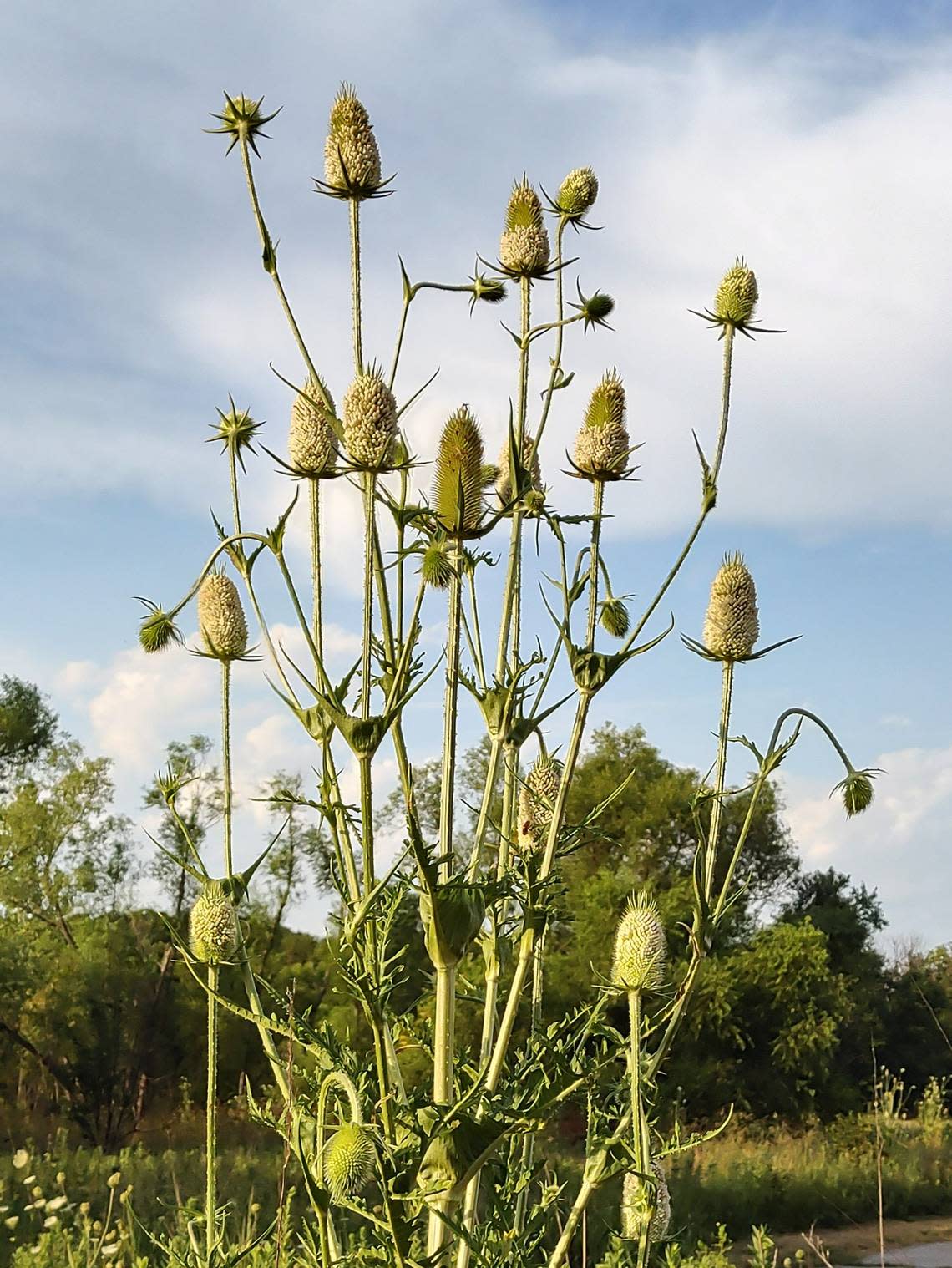Poisonous, tasty or invasive? Wade into the weeds that beautify our roadsides, fields
If they’re growing in the ditches and along the roadside, would you consider them a wildflower or a weed? Whether you label them as a weed or a wildflower depends on the viewers’ perspective, as the definition of a weed is an unwanted plant, or one out of place.
Each summer, the Johnson County Extension Gardening Hotline receives numerous calls from people who request the names of flowering plants seen along the roadsides. Two with frequent requests for identification are Queen Anne’s lace and chicory. We also get questions about another distinctive common weed to be described later.
Queen Anne’s lace can frequently be confused with poison hemlock. Both are members of the parsley family, but each has distinct identifying characteristics that make them easy to tell apart. Queen Anne’s lace has hairy stems, while poison hemlock is hairless and has purple blotches on the stems. Flowers are flat white umbrella discs on both and have slight variations.
Flowers on Queen Anne’s lace nearly always have a single purplish/red flower in their disc centers. The blossom of Queen Anne’s lace is usually flat topped, while poison hemlock’s blossom is more rounded. Avoid all contact with poison hemlock as the entire plant is poisonous.
Also called wild carrot, the name Queen Anne’s lace goes back to 18th century England, when it was used as a living lace in garments. This biennial plant starts out as a clump of ferny growth, sets flowers the following season, then dies. Seeds have tiny barbs that help them spread easily. The plant spreads so easily in wastelands and roads that it can become invasive. Thirty-five states have listed it on their invasive plant list because it can choke out other natural vegetation.
Chicory is certainly noticeable on the roadside with its bright true-blue color. This herbaceous perennial has been cultivated for centuries. Young leaves are used in salads, mature leaves can be used when cooked as a green vegetable, and the processed roots can be a coffee substitute. It is even used in livestock feed for internal parasite controls. The wild varieties may not be as prized for these properties as the more cultivated species.
Chicory, like Queen Anne’s lace, has an invasive nature and can quickly reproduce in open wastelands. However, when the blue and white combinations light up the roadside edges against a background of deep green, it is a beautiful sight to see.

Teasel is another plant along our roads with unique features, though it may not be as desirable aesthetically. A biennial that favors sunny fields and wastelands such as roadside ditches, this plant can reach over 6 feet in height and is crowned with huge, spiny seed heads similar in appearance to thistle by mid-summer. People have been known to collect the seed heads and use them as textural interest in flower arrangements.
This non-native was brought to North America in the 1700s for use in the garment industry. People used the dried, spiny flower/seed heads to raise the nap on cloth. Since then, it has escaped into the wild.
Teasel seeds germinate easily and produce thick stands that can choke out desirable and beneficial native vegetation. It has been declared invasive in all regions where it is found growing. To help decrease the spread of the plant, do not collect the seed heads.
Next time you are traveling along the roadside as a passenger, get your nose out of your book, phone or video game and look around. You will be surprised, maybe even amazed. You may discover a wide variety of beauty in roadside flowers, or in some cases weeds, that put on a natural summer show.
Dennis Patton is a horticulture agent with Kansas State University Research and Extension. Have a question for him or other university extension experts? Email them to garden.help@jocogov.org.
